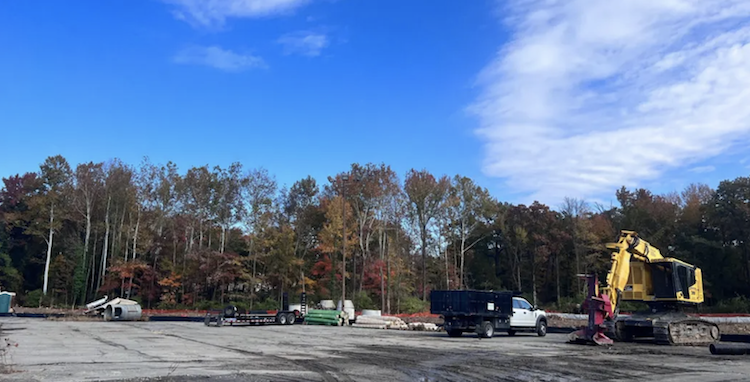White House and EPA Recognize Prince George’s County Stormwater Retrofit Public-Private (P3) Among Most Innovative in the Nation
April 3, 2015Accelerating Sustainable Stormwater Infrastructure Investments
July 16, 2015Governing Magazine
Daniel C. Vock
05/27/2015
Leaders in Maryland’s Prince George’s County face an enormous task in complying with a federal “pollution diet” to clean up the Chesapeake Bay. Over the next decade, the county must convert 15,000 acres of watertight surfaces — almost 5 percent of the county’s total area — into surfaces that will either soak up or treat rainwater. To meet that deadline, Prince George’s will have to add some 46,000 stormwater devices, said Adam Ortiz, the director of the county’s environment department. “This isn’t like building one high school or a bridge. We’re building tens of thousands of little ecosystems in some of our most disadvantaged areas. We need a new approach.”
So Prince George’s, which borders Washington, D.C., is turning to a public-private partnership to help install the rain gardens, cisterns, permeable pavements, and other devices for filtering and absorbing stormwater. Slowing the rapid runoff from roads and rooftops could reduce pollution that flows into sewers and, eventually, into the Chesapeake Bay.
Using a public-private partnership to build green infrastructure on such a large scale is novel in itself. But the county is especially excited about the potential economic boost and other societal benefits the deal could bring to the region. Its partnership with Corvias Solutions includes incentives for all of those goals.
Corvias has also agreed to use local women- and minority-owned businesses and to hire 80 percent of its workforce for the projects from the region. That’s a big deal for a county where more than half of residents leave the area to go to work every day. “We don’t make our fee just for delivering on time and on budget,” said Greg Cannito, managing director at Corvias Solutions. “We only make our full fee if we do it on time, on budget, utilizing local county-based minority businesses and employing local county residents. That [arrangement] put an emphasis on the social outcomes.”
That stress on benefits to society is attracting a lot of attention. The U.S. Environmental Protection Agency and the White House have been highlighting the deal with Prince George’s County as a model for other jurisdictions, according to Cannito. Corvias, which has handled stormwater issues as part of its deals to build and maintain military housing for the federal government, has been contacted about other possible deals, too.
Prince George’s County, for its part, will test whether Corvias can deliver on its promises. Initially, the company will be charged with converting 2,000 acres by 2017. But if it performs well, that amount could double. Meanwhile, a team of county workers will be “racing” Corvias to build stormwater improvements. The county team will also have 2,000 acres to work on so that officials can compare the two approaches. That information will help the county decide whether to expand the public-private partnership. It will also help other jurisdictions decide whether they also want to try something similar.
Corvias will be in charge of designing, building and maintaining the improvements — a nontraditional setup that could save the company up to 40 percent of the project’s original costs. Normally, the county would hire separate contractors to design and then build the projects, with the county taking over maintenance once construction is complete. Corvias also hopes to gain efficiencies by working on multiple projects at once.
The company has agreed to finance 30 percent to 40 percent of the program’s costs immediately to speed along construction, which will start in the next few weeks. It will be paid over the life of the agreement through stormwater fees on local residents and businesses.
The Corvias deal is only one way the county is trying to enlist private interests to build better green infrastructure. Residents can get credits on their stormwater bills for making improvements on their own property, similar to weatherization credits electric customers can receive. The county is offering grants to businesses and large property owners. It is also enlisting churches and other faith communities to educate their members about steps they can take to curb water pollution.
Ortiz, the county’s environmental director, said the overhaul of the county’s water infrastructure is a great opportunity, especially for a county that pioneered the concept of low-impact development — the idea that stormwater should be managed at its source, rather than piped directly into rivers or retention ponds. “This is less a federal regulatory program and more of a community development program,” Ortiz said. “We’re talking about streetscapes and green and lush elements in asphalt- and concrete-laden neighborhoods. That’s a tremendous opportunity and investment in capital dollars that many of these neighborhoods would not otherwise see.”



